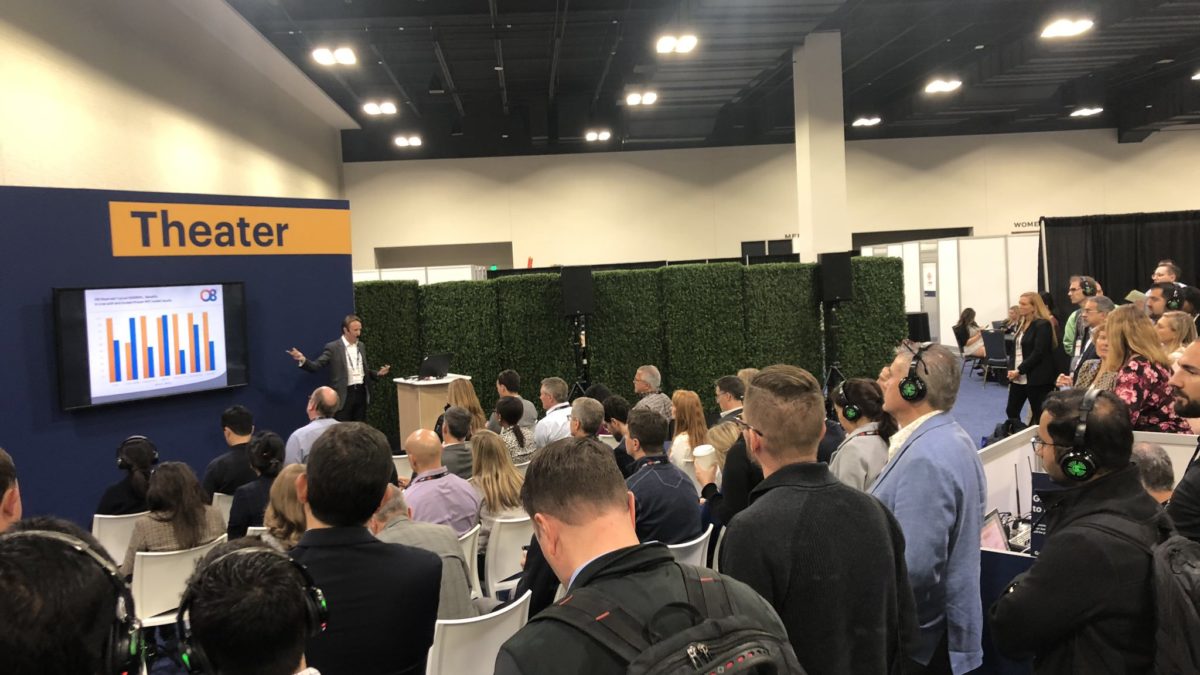Having just returned from the Gartner Supply Chain Planning Summit in Denver, I am energized about the state of our industry. The quality of the content, the number of attendees, and the depth of perspectives all contributed to the buzz about the conference and the future of supply chain planning.
 The content at the Summit revolved around several themes, including Sales and Operations Planning (S&OP), Sales and Operations Execution (S&OE), the digital supply chain, and more. While S&OP was a major topic, the shorter term, more tactically focused S&OE also got its due. Whereas S&OP focuses on the three to 12-month business cycle, S&OE processes focus on the zero to three-month window when turbulence in your supply chain network is most acute. As channels proliferate, customers become more demanding, and markets become more complex, the need for a dedicated short-term planning process becomes more critical. If longer term supply chain performance means winning in the short term, it’s important to predict and respond to short- term supply chain disruptions that can adversely affect your committed sales and operations plan. JDA’s recent whitepaper, The Planning Crisis; describes these challenges and new solutions in more detail.
The content at the Summit revolved around several themes, including Sales and Operations Planning (S&OP), Sales and Operations Execution (S&OE), the digital supply chain, and more. While S&OP was a major topic, the shorter term, more tactically focused S&OE also got its due. Whereas S&OP focuses on the three to 12-month business cycle, S&OE processes focus on the zero to three-month window when turbulence in your supply chain network is most acute. As channels proliferate, customers become more demanding, and markets become more complex, the need for a dedicated short-term planning process becomes more critical. If longer term supply chain performance means winning in the short term, it’s important to predict and respond to short- term supply chain disruptions that can adversely affect your committed sales and operations plan. JDA’s recent whitepaper, The Planning Crisis; describes these challenges and new solutions in more detail.
The impact of the digital supply chain was another theme that echoed throughout the conference. Gartner’s own research shows that 86% of supply chain practitioners have either undertaken or are planning to implement a digital supply chain1. Cloud computing, the IoT, social media, open platforms and other digital trends offer huge opportunities to improve the performance of our supply chain networks. JDA DEVCON, the industry’s first developer’s conference last May, has helped to usher in a wave of platform announcements that hold the promise of more flexible solution integrations and faster innovation. JDA’s new whitepaper on Demystifying Digital Transformation explores these trends in more detail.
 Meanwhile, the JDA booth in the exhibit area was very busy and attendees were anxious to learn about the latest developments. JDA showcased a new, intuitive user interface and advanced applications of machine learning for forecasting, supply response, and end-to-end visibility and collaboration.
Meanwhile, the JDA booth in the exhibit area was very busy and attendees were anxious to learn about the latest developments. JDA showcased a new, intuitive user interface and advanced applications of machine learning for forecasting, supply response, and end-to-end visibility and collaboration.
Attendees were excited to see use cases showing how JDA’s machine learning (ML) algorithms could continue to enhance their supply chain solutions over time. This means that users can allow the JDA algorithms to automatically solve routine disruptions, while simultaneously prioritizing and providing recommendations for solving more complex network challenges. The demonstrations took ML from the “hype cycle” to reality very quickly.
Gartner produces many excellent conferences throughout the year, and now supply chain planning now has its own dedicated Gartner conference. I’m already looking forward to next year’s conference!
1 Gartner Supply Chain Planning Summit, Lead the Supply Chain Down the Road to Digital Success, Mike Burkett, November 4-5, 2019

